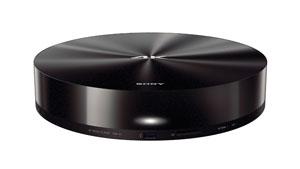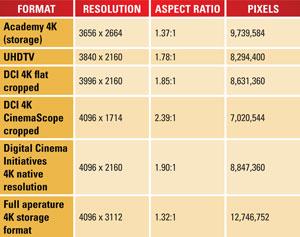1080p and beyond
In October 1988, the theme of Broadcast Engineering’s then sister publication Video Systems was “Resolution Revolution.” The highlight of the exciting news was, wait for it, Super VHS. The magazine also carried an article about HDTV, but at the time, HD was considered a technical curiosity similar to the soon-to-be-emerging Internet. The only HDTV network at the time was operated by the Mayo Clinic in Minnesota. It allowed doctors to conduct video consultations at 1050-line resolution. Other parties actively interested in HDTV were the New York Port Authority and a Canadian grocery store chain wanting to display closed-circuit in-store HD ads. Broadcaster interest was conspicuously absent.
In 1972, NHK created “NHK Color,” an 1150-line 60Hz system with an aspect ratio of 5:3. According to an Annenberg Washington Program presentation in Chicago, SMPTE first discovered HDTV as it was being used in a Japanese auto parts factory. While some might question the validity of that claim, there is no question that SMPTE recognized the future and established its authority in HDTV testing and studies in the 1970s. The analog NHK Color evolved into Hi-Vision, aka MUSE, and was first broadcast in Japan via satellite in late 1994. In 1996, WRAL-HD in Raleigh, NC, was the first on-air station in the U.S. to broadcast an HDTV signal. Then came DTV, and the rest is history.
Today, HDTV is everywhere. Looking as forward as possible at the time it was implemented, ATSC’s Table 3 definitions of HDTV streams go no further than 1080p. Clearly outdated, the group is working on ATSC standard 3.0 to keep up with the now-perpetual resolution revolution. The problem today is that broadcasting and its audience is like an aircraft carrier — huge, powerful and slow to change course. The Internet offers the agility of a modern speed boat and is, therefore, the greatest challenge to broadcasters. Already, YouTube allows a maximum resolution upload of 4096 x 3072, which is a 4:3 aspect ratio 4K format containing 12.6 megapixels. Unfortunately, at this time, most 4K Internet video is so highly compressed, it’s difficult for average viewers to clearly observe the advanced 4K quality.

Sony’s FMP-X1 Media Player for the consumer market will be preloaded with 10 4K movies and shorts.
As of now, there are no 4K DVD or 4K Blu-ray specifications. One reason is that even when compressed by HEVC, a feature-length 4K movie would contain twice the data a dual-layer Blu-ray disc can presently hold. When Sony recently announced prices and availability of its new line of 4K TV displays at the 2013 NAB Show, it also announced the FMP-X1 Media Player. Although it looks like a disc player, technical details are being held close to the vest. The player comes preloaded with 10 feature films and shorts, stored non-optically. The company also announced an upcoming video distribution service to bring the 4K entertainment experience to viewers at home, assumedly by download.
At January’s Las Vegas CES, the company announced a library of “Mastered in 4K” Blu-ray discs meeting Blu-ray specs, but not actually 4K. Not surprisingly, the company says when the content is “upscaled” by its line of 4K Ultra HD TVs, the “discs serve as an ideal way for consumers to experience near-4K picture quality,” somewhat reminiscent of the interim and short-lived 1440 x 1080 HDCAM/HDV format.
The HEVC enabler
Distribution of 4K to the general public is a difficult proposition. On one hand is the Internet, which with leading-edge, high-speed systems like Google Fiber, can easily handle 4K or better bandwidth requirements, although people on the last mile of standard DSL service won’t see it. On the other hand is broadcast television, limited to the traditional 6MHz channel. If it weren’t for another big step forward in video compression, namely HEVC, aka H.265, discussion of formats for mass distribution beyond 1080p would be somewhat moot. Even at this point in time, although allowable under ATSC standards, there are no U.S. TV stations broadcasting 1080p OTA. One likely reason is a lack of 1080p broadcast content. There are no official specifications for 4K broadcasting, yet. However, HEVC appears to be the magic key that could open that door.
Get the TV Tech Newsletter
The professional video industry's #1 source for news, trends and product and tech information. Sign up below.
Encoding H.265 requires approximately 10 times the processing power of H.264, and it needs approximately double to four times the processing power of H.264 for decoding. Right now, codec latency has ample room for improvement, primarily because there are no H.265 chipsets available. As discreet H.265 silicone is developed and released, latency and costs will be greatly reduced. However, there is a huge universe of H.264 gear, such as OTT and TV displays, that will have to be replaced. H.265 is not backwards-compatible with H.264.
Will the consumer electronics world will buy into 4K and later 8K video? Will the ATSC adopt 4K in ATSC 3.0? Will dumpsters overflow with “old” MPEG-2 and H.264 displays? These are questions your boss, friends and neighbors might ask you, but they are well beyond the scope of this article. After all, who could have guessed 3-D HD would have hit the market with such a spectacular thud? Instead, let’s focus on the use of the newest formats outside of distribution.
4K content creation
4K is essentially a 2 x 2 array of HDTV images. Thus, the base bandwidth of 4K is four times that of HDTV. Similarly, 8K is a 4 x 4 array of HDTV images requiring eight times HDTV bandwidth. Within a production environment, that problem is rather easily addressed, just as some early adaptors addressed 3-D HDTV by creating dual-stream signal paths to carry the bandwidth. The introduction of 3G-SDI eliminated the need for a dual-stream path for 3-D, just as 6G-SDI will, when finalized, eliminate the need for two 3G-SDI streams to support 4K. The prospect of 12G-SDI for 8K seems to be within the foreseeable future.
It is important to note that 4K is not the end-all resolution. At the recent NAB Show, nearly everyone who was talking about and showing 4K products and technologies was also talking about 8K being just around the corner. For example, back in the corner of the North Hall, NHK was showing a prototype Super Hi-Vision camera and theater presentation. The camera had 8K resolution, operated at a frame frequency of 120Hz, with 12-bit A/D conversion and contained three 120Hz, 24.7mm 33-megapixel sensors. The output circuit consisted of 96 parallel channels. NHK said an image sensor with greater sensitivity was under development. The images were spectacular.
Given imaging progress that seems to so accurately follow Moore’s Law, at what point will resolution be good enough, if ever? More realistically, is 4K just another rung on the technical progress ladder?
New SFX
There are certain unique special effects that can best be accomplished on a large canvas such as 4K, 8K and beyond. Just as 1920 x 1080 HDTV is generally considered to be 2K, the 4K format is actually a number of formats, all derived from a 4096-pixel-wide native resolution raster. (See Table 1.) One of the original 4K devices, the RED ONE camera, recorded at 4096 x 2304. The 4K Ultra HD television (UHDTV) format is actually 3840 x 2160.

Table 1. The term 4K refers to a host of unique individual formats.
The most obvious production advantage of 4K ultimately destined for HDTV distribution is the ability to pan and zoom with an HDTV window in a 4K space. One of the easiest concepts to relate to is the ability to properly frame up a poorly framed camera shot at a live sporting event. If the action was captured in the corner of a 4K screen being downconverted for HDTV broadcast, the replay can zoom in and center the action with scalable downconversion that maintains a full HDTV image. Imagine how well that could enhance the effectiveness of instant replays, not only for viewers, but for referees and umpires as well. It’s almost a mistake eraser.
Another facet of 4K, 8K and higher resolutions is the benefits they offer the emerging market for huge screens in venues such as sports stadiums and other public places. While the average living room viewer might find it difficult to fully appreciate the difference between 4K and 8K 60in displays, fans in stadiums watching screens such as the recently installed 11,425sq-ft Panasonic Lighthouse HD video display at Safeco Field in Seattle won’t be able to miss it. Again, the ability to electronically pan and zoom without resolution compromise at the display will be a huge advantage for those producing closed-circuit sports venue feeds.

The massive 11,425sq-ft Panasonic Lighthouse HD video display recently installed at Seattle’s Safeco Field could benefit from higher resolution sources.
Let’s not forget the many nonbroadcast users hungry and willing to spend money for higher resolutions. Expect the medical industry to continue to be willing to pay for increased resolutions. It would also make sense that the security industry, both private and government, will be eager to take advantage of the benefits of higher resolutions as the technology progresses.
If 4K doesn’t sway the consumer TV market, HEVC technology also opens the door to doubling the number of traditional HDTV channels without increasing bandwidth. Either way, everyone benefits
—Ned Soseman owns LAKETV LLC in Camdenton, MO, and is chief operator at KRBK-DT, Springfield/Osage Beach, MO.
